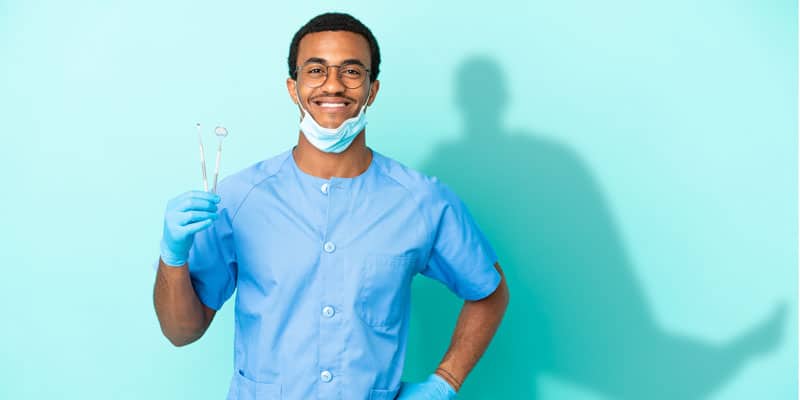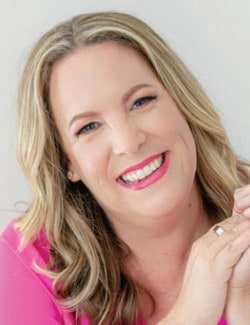Podcaster Emma Cooksey discusses her “wake-up call” for OSA, her podcast, “Sleep Apnea Stories,” and the importance of dentists asking OSA-focused questions to their patients.
 by Emma Cooksey
by Emma Cooksey
I went undiagnosed with obstructive sleep apnea for more than 10 years. One day I was driving home with my baby daughter in the backseat, and I found myself struggling to stay awake. I blew air on my face and focused on the license plate of a large white truck in front of me. One moment the letters on the license plate were blurring in the distance and the next moment they were crisp and clear, coming straight toward me in slow motion. I slammed on my brakes to avoid a collision, but that incident was my wake-up call (see what I did there?) – I could no longer ignore this problem.
My symptoms began in my early twenties. I would show up to the doctor’s office in a flood of tears and explain my symptoms the best I could between sobs. Despite sleeping at least 8 hours per night, I struggled with daytime sleepiness every day. I had every possible symptom of sleep apnea but few of the risk factors. As a thin, active woman who didn’t have the thick neck or excess weight so many doctors would look for, I was repeatedly told I was “stressed” or “anxious”. I had the morning headaches, teeth grinding, snoring, anxiety, and frequent bathroom trips at night. None of the doctors I saw in my twenties spotted my obstructive sleep apnea, but here’s another truth: my dentist didn’t either.
If my dentist had asked a few simple questions about my sleep, my obstructive sleep apnea diagnosis may have come a lot sooner….I would have been forever grateful and considered that dentist my hero.
All those years I wasn’t being referred for a sleep study, I was diligently having my teeth cleaned every 6 months. Not only did I have every symptom of sleep apnea, but I also had all the tell-tale warning signs right there in my mouth. The stress on my teeth from constant teeth grinding, the scalloped edge of my tongue – and that’s before we even start on my narrow, high-arched palate and mouth breathing. It’s a dubious claim to fame but if there were a poster child for obstructive sleep apnea, I’d be in the running.
Early in 2020, I was sitting in a doctor’s office waiting room when an article in one of the health magazines caught my eye. At that point, I had used CPAP for 12 years since my diagnosis in 2008. The very last paragraph of that article mentioned dental appliances available to obstructive sleep apnea patients as an alternative to PAP therapy. I had never heard of any treatment other than CPAP, despite regularly seeing a sleep specialist for 12 years. I felt annoyed that no one had shared this information with me before and I realized in that moment just how little I really knew about the OSA which had such a big impact on my quality of life.
As a busy mom of two kids, I spent hours listening to podcasts every week as I sat watching my kids’ sports practice and waiting to pick them up at school events. When I searched sleep apnea in my podcast app, I didn’t come up with the clear information I was looking for. I wanted to hear from patients directly about their experiences with oral appliances, and all manner of other treatment options I was yet to discover. Since I couldn’t find it, I set about creating the podcast I wanted to listen to.
In the summer of 2020, I started a podcast called “Sleep Apnea Stories” to provide a platform for people living with sleep apnea to tell their stories. My goal was to help my audience, and myself, feel less alone in our sleep apnea journeys. I wanted to share uplifting and helpful stories from people representing very different backgrounds and choosing different treatment options. In dozens of episodes, I have interviewed male and female athletes, moms, young people, old people, and parents of kids with sleep apnea. They have shared about CPAP therapy, oral appliance therapy, orthognathic surgery, nasal and throat surgery, hypoglossal nerve stimulation, palate expansion, NMES, myofunctional therapy, breathwork, and even didgeridoo playing.
Aside from learning a LOT about the different treatment options for OSA, I also learned a lot about what is and isn’t working for patients in the current system. A huge problem is the number of people going significant periods of time without a diagnosis. That’s a monster crisis with a simple solution: If every dentist were properly screening for sleep-disordered breathing in every patient, millions of people currently undiagnosed could be identified and offered sleep studies. I hope that primary care physicians receive more training in sleep disorders and are better able to spot these symptoms too. However, it’s dentists and hygienists who are up close to the problems sleep apnea creates. Wear on teeth, scalloped tongues, mouth breathing, enlarged tonsils, tongue-ties and narrow palates – it’s hard to ignore these things when you are made aware of them.
As patients, we want to be offered all the treatment options available for OSA so that we don’t have to read about them for the first time in a waiting room magazine. We also want healthcare providers who care enough to ask questions about our sleep before we reach a crisis point and fall asleep at the wheel. In my early twenties, if my dentist had asked a few simple questions about my sleep, my obstructive sleep apnea diagnosis may have come a lot sooner. Not only would I have been treated more quickly, I would have been forever grateful and considered that dentist my hero. You have the power to be that hero in someone’s life today, I hope you’ll use it.
It is important for dentists to ask patients about their sleep apnea stories. Dentists need to be informed and prepared to help patients take action. Read “Sleep Medicine’s Seismic Shift to Dentists – Are You Ready?” to find out more about sleep dentistry’s exponential growth. https://dentalsleeppractice.com/sleep-medicines-seismic-shift-to-dentists-are-you-ready/
 Emma Cooksey is a podcast host and writer. She was diagnosed with obstructive sleep apnea at the age of 30, after more than a decade of unexplained health problems. By sharing her journey and encouraging others to tell their stories, Emma has been breaking down stereotypes of sleep apnea while also raising awareness of symptoms and treatment options. Emma hosts the weekly podcast, “Sleep Apnea Stories” and writes articles for Health Union’s patient support website. In January 2022, Emma was appointed to the board of directors of Project Sleep, a 501(c)(3) non-profit organization raising awareness about sleep health and sleep conditions.
Emma Cooksey is a podcast host and writer. She was diagnosed with obstructive sleep apnea at the age of 30, after more than a decade of unexplained health problems. By sharing her journey and encouraging others to tell their stories, Emma has been breaking down stereotypes of sleep apnea while also raising awareness of symptoms and treatment options. Emma hosts the weekly podcast, “Sleep Apnea Stories” and writes articles for Health Union’s patient support website. In January 2022, Emma was appointed to the board of directors of Project Sleep, a 501(c)(3) non-profit organization raising awareness about sleep health and sleep conditions.


